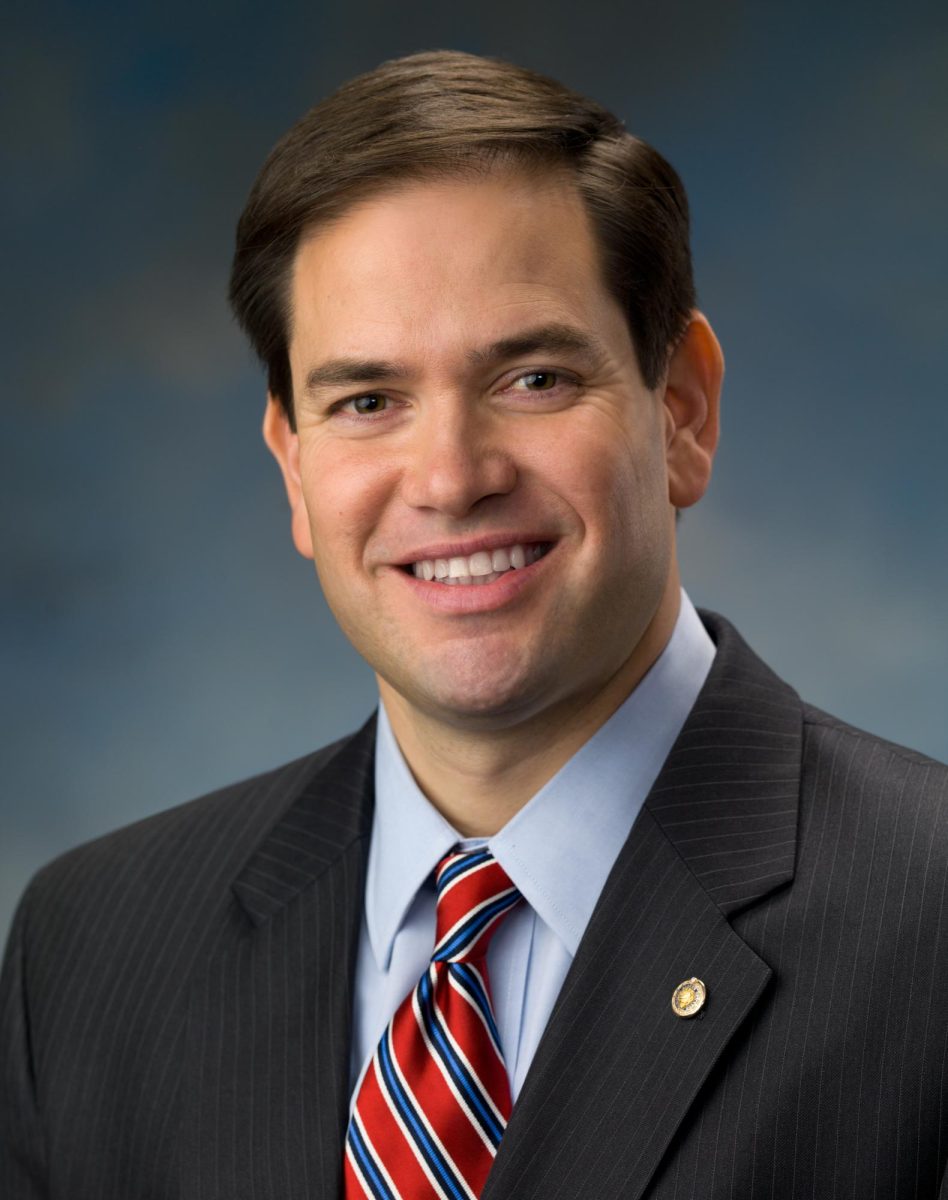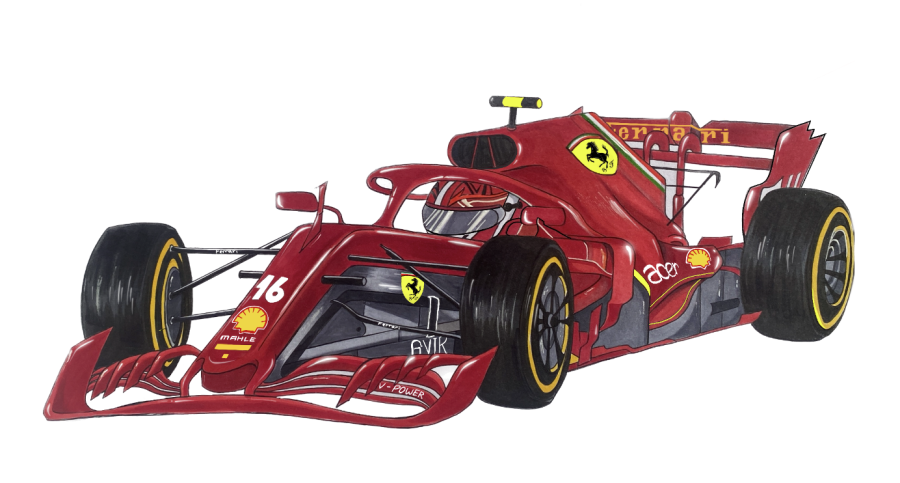The Rise of Formula One
Known as the pinnacle of motor sport Formula One’s recent surge in popularity has taken the world by storm.
April 4, 2023
“Five lights on. And it’s lights out, and away we go in Monaco” In the midst of the night, 20 engines roar to life at 223 miles per hour as the stench of oil fills the air. Clouds of smoke fog up in the humid night, bringing the twinkling city to life. Revving with immense power, a colorful blur of cars skid across the adrenaline-packed 3-mile track, while burnt tires mark the asphalt ground as they round a tight chicane causing an echo of cheers in the stands. That is Formula 1, the pinnacle of motorsport. Just like any other motorsport, such as NASCAR and IndyCar, there is always one goal in mind; winning. To understand Formula 1, there is absolutely no prerequisite in knowledge; simply, a car drives fast, and the first car that crosses the finish line wins.
Aside from the jam-packed action and adrenaline, off the track and in the paddocks, many rivalries and dramas keep watchers on their toes with controversy sprinkled within, making it entertaining all around.
Dating back to the 20th century, competitive racing had always been prevalent in European cultures ever since the 1900s prompting the birth of Formula 1. After facing a surge in popularity amongst several countries in 1931 and 1939, the Association Internationale des Automobile Clubs Reconnus (AIACR) authorized open-wheeled racing hosting the first-ever European Championship, later becoming the Formula 1 World Championship.
In hopes of turning several dispersed races into a single championship, the 1930s and 1940s became the driving force until World War II started halting everything. Once the war ended in 1946, the Federation Internale de l’Automobile (FIA) began creating a blueprint of rules needed to create a championship.
Born in Silverstone, England, the first-ever race took place in 1950 at the British Grand Prix, cementing England as the origin of one of the most popular sports today. At the center of this motorsport, Formula 1 is largely built on both the capabilities of a driver’s skill, team strategy, and the performance of their cars. Built under strict technical guidelines provided by the FIA, each team must adhere to the regulations while also being provided creative liberties and technical creations. In many admirable cases, F1 consciously stretches the pursuits of each team by forcing them to push beyond the cookie-cutter outline and instead test the limitation of research and design capabilities to stay one step ahead of their competitors, year after year. While teams are scratching the bottom of finding any incremental advantage, each team has been granted a whopping 135 million dollars allowance by the FIA to spend on their new livery (newest car) to promote new technology and competition.
While F1 remains extremely difficult to maneuver and control due to its sheer power, select drivers must prove themselves to their teams and fans by driving every last bit of the car to the asphalt for a nod-worthy performance while remaining in a highly competitive environment.
When given such a complicated and intense vehicle, the drivability rate quickly increases even for the most elite drivers, as the unique characteristics of the F1 car prove to be very difficult. Some include being a tight single-seater, an open-cockpit (like a convertible), an open-wheel (the wheel are outside of the car), and the configuration of the wheels.
Weighing 1,759 pounds (798 kg), the Formula 1 power units, according to Defector.com, “have been based on 1.6 liters V6 direct fuel injection turbo-hybrid engines—the defining feature of this era of F1.”
Looking at the inside of the car, the combustion engine is connected to a turbocharger that is joined by two electric motor generator units to create even more power. In doing so, kinetic energy is saved as the car constantly brakes, converting all that heat produced into energy for driving the vehicle. Within the battery pack sits lithium-ion cells which have been considered “the most efficient engines in the world,” according to Formula.com.
In order to maintain the center of gravity to a minimum, drivers must be sitting on the base of the car while tilting back as their legs are extended in front. As the driver’s legs are stretched out, they are enveloped in a monocoque chassis formulated with ultra-lightweight carbon fiber, while the tank full of fuel is situated right behind them to limit the possibility of the car bursting into flames if it crashes.
Instilled in the motorsport’s blood, Formula 1 is the tradition of not only competing against rivals but also against their own performance last season. In the hope of creating a more aerodynamic and fast team that exceeds the boundary of motor design year by year, teams must find even the smallest of loopholes in regulations to facilitate a new and improved design.
In order to outperform each other in efficiency, design, and speed, F1 engineering is integral in optimizing the most updated and advanced technological automotive. Multiple modifications, like a car’s downforce and drag, must be accounted for. Too much of something can cause multiple maneuvering issues, such as oversteer and understeer, which rely on the amount of downforce applied in the rear and front of the car. Aside from the complexities that come with designing a Formula 1 car each year, being on track and racing proves to be a whole new difficulty.
While this seems quite simple, specific procedures need to be done before the five lights flash to go. Two days before a race, like many other sports, are qualifying laps. During qualifying, each team has the opportunity to compete for the highest position on the grid for race day, earning a huge advantage. Beginning in a staggered position, getting P1 (position 1) on race day is critical in getting a head start. On race day, when nerves are running high and dedicated fans come repping their favorite teams, all twenty cars will begin a formation lap from the grid to warm up their tires and test their engines right before the official race time.
Similar to a warm-up in any other sport, team radios are tested, as well as their braking system, to catch any errors prior to the race. Once everything is warmed up and tested, all cars return to their slots based on their qualifying positions for the dramatic five red lights to indicate the start.
As engines are fired, a huge rush begins as cars attempt to overtake and squeeze past each other, causing a storm. As junior Griffin Rick said, “They quick… Like, c’mon, they’re crazy. The fastest speed recorded in the 2022 season was ~218 mph, i.e., ludicrous amounts of speed, which I think is just absolutely incredible.”
Racing for two hours on an average of 50-70 laps, depending on the circuit, drivers race approximately 190 miles nonstop. When racing so tightly against each other while burning around 242 lbs of unleaded fuel cars, drivers are prohibited from cutting corners like in the game Mario Kart or else a penalization will be given.
The first ten finishers of the race are rewarded points that accumulate in the chance of winning the World Championship. First place gets 25 points, 18 for second place, and 15 for third, while the rest down to 10th place get 1 point. Per championship tradition, bottles of champagne are given to the top three podium finishes to either drink or mostly spray on one another. Driving in teams of two, there are ten teams on the grid fighting to be crowned world champion and the team Constructors Championship.
While predominantly popular in Europe, Formula 1 has since seen a huge surge in viewership. Wanting to bring attention to Formula 1 on a global scale, Liberty Media had hopes of growing fans and a media following in the U.S. As part of their marketing strategy, Liberty Media collaborated with Netflix to create a docu-series, “Drive to Survive,” to give a glimpse into the world of Formula 1.
First released in 2019, Drive to Survive skyrocketed in U.S. viewership, feeding fans behind-the-scenes content of races and pre-season, allowing fans to create a relationship between their favorite drivers and teams.
According to RTR Sports Marketing, “the viewership per race has increased from 547,722 viewers in 2018 to 1.4 million viewers in 2022.” A poll conducted by InsideHook reported that “more than half of self-identified Formula 1 fan in the U.S. have claimed they became fans after watching the series.” Signing multiple deals with ESPN for global streaming, Griffin says, I think it’s great. If there is any sport I can genuinely get behind, it’s racing, and I love that new people are gaining interest in the sport.”

































